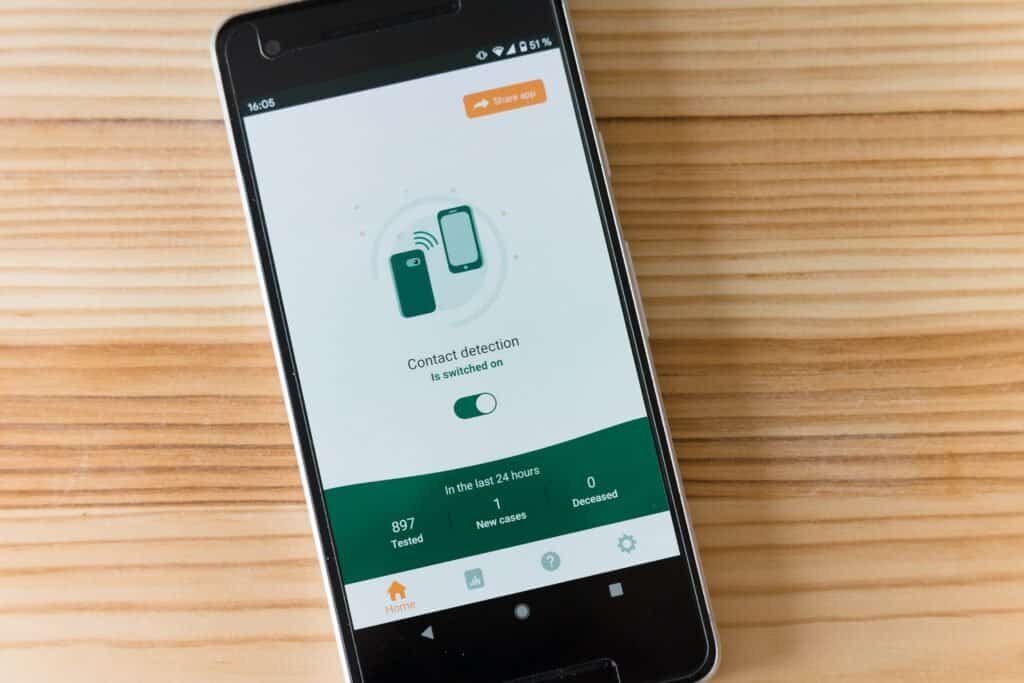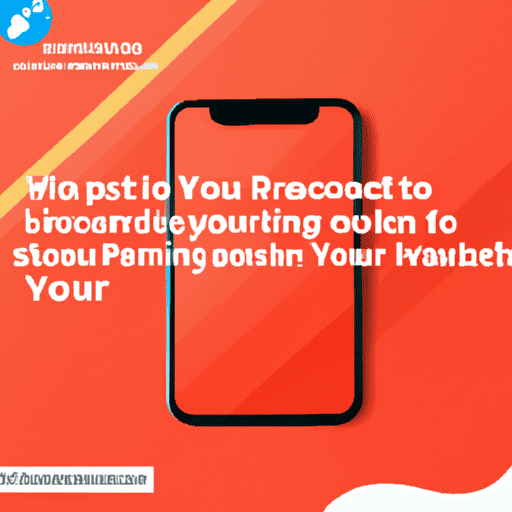In this article, we will discuss some tips and tricks on how you can protect your smartphone screen from scratches. We understand how important your smartphone is to you and we want to help you keep it in the best possible condition. Throughout this article, you will learn about the importance of using a screen protector, how to clean your screen properly, and some other precautionary measures you can take to avoid scratches. So, let’s get started and ensure that your smartphone screen stays scratch-free!

Understanding the Importance of Protecting Your Smartphone Screen
Your smartphone is likely one of your most prized possessions, and the screen is its most vulnerable part. With everyday use, it is common for screens to get scratched, which can not only affect the appearance of your device but also hinder its functionality. That’s why protecting your smartphone screen is crucial. By taking a few preventive measures, you can ensure that your screen remains scratch-free and enjoy a seamless user experience.
Why protecting your smartphone screen is crucial
Your smartphone screen is not only delicate but also plays a vital role in how you interact with your device. It is where you view and navigate through apps, read messages, watch videos, and perform various tasks. A scratched screen can significantly hinder the clarity of the display, making it difficult to read text or watch videos. Furthermore, scratches can also lead to touch sensitivity issues, making it frustrating and challenging to operate your device.
Common causes of screen scratches
There are several reasons why screens get scratched. The most common cause is simply the result of daily wear and tear. Sliding your phone in and out of pockets, placing it on rough surfaces, or accidentally dropping it can all lead to unsightly scratches. In addition, contact with sharp objects such as keys or coins in your pocket or bag can easily leave marks on your screen. Even using improper cleaning techniques can contribute to scratching your screen. It is essential to be aware of these common causes so that you can take the necessary precautions to avoid them.
Choosing the Right Screen Protector
One of the most effective ways to protect your smartphone screen from scratches is by using a screen protector. These thin films or tempered glass protectors are designed to act as a barrier, shielding your screen from scratches and other forms of damage.
Types of screen protectors available
There are several types of screen protectors available, each with its own advantages and disadvantages.
-
Plastic film protectors: These protectors are thin, transparent films that adhere to the surface of your screen. They offer basic scratch protection and are an affordable option. However, they may not provide the same level of durability and impact resistance as other types of protectors.
-
Tempered glass protectors: Made from a highly durable and robust material, tempered glass protectors offer excellent scratch and impact protection. They feel more like the original screen and provide better clarity. They are slightly thicker than plastic film protectors but offer superior protection.
Factors to consider when selecting a screen protector
When choosing a screen protector, there are a few factors you should consider to find the best fit for your needs:
-
Compatibility: Ensure that the screen protector is compatible with your specific smartphone model.
-
Thickness: Consider the thickness of the protector. Thicker protectors tend to offer better protection but may affect the touchscreen sensitivity.
-
Installation: Some screen protectors come with easy installation features, such as alignment frames or adhesive-free installation. Choose a protector that is easy to apply without leaving bubbles or residue.
-
Anti-glare or privacy features: Some screen protectors offer additional features, such as anti-glare coatings or privacy filters. Consider these options if you require enhanced visibility or privacy.
-
Durability: Check the scratch resistance and impact protection level offered by the screen protector. Higher hardness ratings, such as 9H, indicate better scratch resistance.
Applying a Screen Protector Correctly
Once you have chosen the right screen protector, it is essential to apply it correctly to ensure maximum protection and a bubble-free installation.
Step-by-step guide to applying a screen protector
-
Clean the screen: Start by thoroughly cleaning your smartphone screen. Use a microfiber cloth and a cleaning solution specifically designed for electronics to remove any dirt, smudges, or fingerprints.
-
Position the protector: Align the screen protector with your smartphone’s screen, making sure that the edges match. Use the provided alignment frame or guides, if available, for accurate placement.
-
Remove the backing: Carefully peel off the backing of the screen protector, exposing the adhesive side.
-
Apply the protector: Slowly lower the screen protector onto the screen, aligning it carefully with the edges and any cutouts for buttons or sensors. Gently press down on the protector, starting from the center and working your way towards the edges, to remove any air bubbles.
-
Smooth out bubbles: If you notice any bubbles, carefully lift the protector and reposition it, then press down again to remove the bubbles. Use a microfiber cloth or the provided applicator to smooth out the protector.
Tips for ensuring a bubble-free application
-
Apply the screen protector in a clean and dust-free environment to prevent particles from getting trapped under the protector.
-
Use the provided cleaning wipes to ensure that the screen is free from any dust or debris that can cause bubbles.
-
Apply the protector slowly and carefully, avoiding rushing the process, as this can often lead to mistakes or bubbles.
-
If bubbles persist, try using a credit card or a similar flat-edged object to push out any trapped air bubbles.
Using a Protective Phone Case
In addition to using a screen protector, another essential accessory for protecting your smartphone is a reliable phone case. While a phone case may not directly protect the screen, it provides an extra layer of protection against accidental drops, bumps, and knocks.
Advantages of using a phone case
A phone case offers several advantages when it comes to protecting your smartphone, such as:
-
Impact protection: A phone case absorbs shock and impact, reducing the risk of damage to both the screen and the internal components of your device.
-
Scratch and scuff protection: Along with shielding the back and sides of your phone, a case also covers the edges of the screen, preventing scratches and scuffs.
-
Enhanced grip: Some phone cases are designed with textured materials that provide better grip, reducing the chances of accidental drops.
Different types of phone cases available
Phone cases are available in a variety of materials, styles, and levels of protection. The most common types of phone cases include:
-
Plastic cases: These cases are lightweight and provide basic protection against scratches and minor drops. However, they may not offer the same level of impact resistance as other materials.
-
Silicone or rubber cases: Known for their shock-absorbing properties, silicone or rubber cases are flexible and provide excellent protection against drops. They often have raised edges around the screen for added screen protection.
-
TPU cases: TPU (thermoplastic polyurethane) cases offer a combination of flexibility and durability, providing protection against scratches, bumps, and drops. They are often transparent, allowing the original design of your device to shine through.
-
Hybrid cases: Hybrid cases combine materials like plastic, silicone, and TPU to provide a high level of protection against drops and impacts. They typically have reinforced corners for added shock absorption.
Features to look for in a protective phone case
When selecting a phone case, consider the following features to ensure maximum protection for your device:
-
Raised edges: Look for a case that has raised edges around the screen to prevent it from coming into direct contact with surfaces when placed face-down.
-
Button and port accessibility: Ensure that the case allows easy access to buttons, speakers, ports, and other essential features of your smartphone.
-
Impact resistance: Choose a case that offers excellent impact resistance to safeguard your device against accidental drops.
-
Non-slip grip: If you tend to drop your phone frequently, select a case with a non-slip or textured grip to enhance your hold on the device.
-
Compatibility: Ensure that the case is designed specifically for your smartphone model to ensure a perfect fit and proper protection.

Avoiding Contact with Sharp Objects
One of the simplest yet often overlooked ways to prevent screen scratches is to avoid contact with sharp objects.
Keeping your smartphone away from keys and coins
Keys and coins are common culprits when it comes to scratching smartphone screens. To prevent accidental contact, it is advisable to keep your phone in a separate pocket or compartment that is dedicated solely to your device. By doing so, you can minimize the risk of your screen coming into contact with any sharp objects that may be lurking around in your pockets.
Preventing accidental contact with sharp objects
In addition to keeping your phone separate from keys and coins, there are other ways to prevent accidental contact with sharp objects. For instance, when placing your phone on a table or desk, ensure that there are no sharp objects like pens or paperclips nearby that can scrape against the screen. It is also a good practice to develop a habit of not placing your phone face-down on surfaces, especially if they are rough or dirty.
Cleaning Your Smartphone Screen Safely
A clean smartphone screen not only enhances the overall appearance of your device but also helps to prevent scratches. However, it is essential to use the right cleaning products and techniques to avoid damaging the screen.
Recommended cleaning products for screens
To clean your smartphone screen safely, it is best to use products specifically designed for screens. Avoid using harsh chemicals, abrasive materials, or household cleaners, as they can damage the screen’s coating. Instead, opt for the following:
-
Microfiber cloth: A microfiber cloth is gentle on the screen and helps to remove smudges and fingerprints without scratching the surface. It is a must-have accessory for cleaning your smartphone regularly.
-
Screen cleaning solution: Use a screen cleaning solution that is alcohol-free and formulated specifically for electronic devices. Spray a small amount onto the microfiber cloth and gently wipe the screen in circular motions.
Proper techniques for cleaning the screen
When cleaning your smartphone screen, follow these proper techniques to avoid causing any scratches:
-
Turn off your device: Before cleaning, make sure to turn off your smartphone to minimize the risk of accidental touches and smearing while cleaning.
-
Wipe gently: Use the damp microfiber cloth to wipe the screen gently, applying light pressure. Avoid pressing too hard, as this can potentially damage the screen.
-
Focus on problem areas: Pay extra attention to areas that have smudges or fingerprints, as they may require a bit more gentle wiping to remove.
-
Dry the screen: After cleaning, use a dry part of the microfiber cloth to wipe away any excess moisture or streaks.
Avoiding scratches while cleaning
To prevent accidental scratches while cleaning your screen, keep the following tips in mind:
-
Avoid using tissues or paper towels, as they can leave behind lint or fibers that can scratch the screen.
-
Do not use excessive force when wiping the screen, as this can cause micro-scratches.
-
If there are stubborn stains or dirt, do not use excessive pressure to remove them. Instead, consult the manufacturer’s instructions or consider professional cleaning services.
-
Avoid spraying cleaning solution directly onto the screen. Always spray it onto the microfiber cloth first to prevent excess moisture from seeping into the device.

Using a Screen Lock or Password
While protecting your physical screen from scratches is essential, it is equally important to safeguard your device from unauthorized access. Using a screen lock or password not only ensures the security of your personal information but also prevents accidental scratches caused by unwanted touches.
Importance of screen lock security
Screen lock security is crucial for protecting your smartphone from unauthorized use or access. In the unfortunate event that your device is lost or stolen, a screen lock prevents anyone from easily accessing your sensitive information, apps, or personal data. It acts as a barrier, adding an extra layer of protection to your device.
Setting up a secure screen lock or password
To set up a secure screen lock or password, follow these steps:
-
Go to your device’s settings.
-
Look for the “Security” or “Biometrics and Security” option.
-
Choose an option such as “Screen lock” or “Fingerprint lock” depending on the available features of your device.
-
Select from the available methods such as PIN, password, pattern, or biometric options like fingerprint or facial recognition.
-
Follow the on-screen instructions to create a strong and unique screen lock or password.
-
Consider enabling additional security features such as two-factor authentication for added protection.
By implementing a screen lock or password, you not only enhance the security of your device but also reduce the chances of accidentally scratching the screen when your device is in use or carried in your pocket or bag.
Avoiding Direct Sunlight and Extreme Temperatures
Protecting your smartphone screen from scratches goes beyond physical contact. Exposure to direct sunlight and extreme temperatures can also have a detrimental effect on your device’s screen.
Effects of sunlight and heat on smartphone screens
Exposing your smartphone to direct sunlight and extreme temperatures can cause screen discoloration, reduced touchscreen sensitivity, or even permanent damage. Prolonged exposure to high temperatures, such as leaving your phone inside a hot car, can cause the screen to warp or the adhesives to weaken, making it easier for dust and debris to enter the device.
Tips for protecting your phone in hot and cold conditions
To protect your smartphone screen from potential damage caused by sunlight and extreme temperatures, consider the following tips:
-
Avoid leaving your phone in direct sunlight for extended periods. Instead, keep it in a shaded area or in your bag or pocket.
-
If you need to use your phone under direct sunlight, try to find a shaded area or use your hand or a cloth to create a shadow over the screen.
-
In extremely cold conditions, such as during winter, avoid exposing your phone to freezing temperatures. Prolonged exposure can cause the screen to become brittle and more susceptible to damage.
-
If you need to warm up your phone from extreme cold, avoid using direct heat sources such as heaters or hairdryers. Instead, use the natural warmth of your body or keep the phone in an insulated pocket or bag to gradually warm it up.
By taking precautions and avoiding prolonged exposure to direct sunlight and extreme temperatures, you can preserve the integrity and functionality of your smartphone screen.

Proper Handling and Carrying of Your Smartphone
The way you handle and carry your smartphone can greatly impact the risk of scratches to the screen. By adopting a few simple practices, you can minimize the likelihood of accidental damage.
How to hold your phone to minimize the risk of scratches
When using your smartphone, it is important to hold it securely and avoid touching the screen unnecessarily. Hold your device by its edges or use a grip or popsocket accessory if you find it difficult to hold it securely. Be mindful of the surfaces you place your phone on, ensuring they are clean and free from debris.
Using dedicated pockets or compartments in bags
When carrying your smartphone in a bag or purse, it is advisable to use dedicated pockets or compartments that separate it from other items. This prevents your device from rubbing against sharp objects or coming into contact with loose change or keys that can cause scratches. Consider using a soft fabric pouch or a phone-specific compartment in your bag for added protection.
Avoiding placing your phone face-down on surfaces
One common habit that can lead to scratches is placing your phone face-down on surfaces. Even if the surface appears clean and smooth, dust particles or tiny debris can cause micro-scratches on the screen. Whenever possible, place your device face-up or invest in a phone case with raised edges that allows you to place your phone on its back without directly touching the screen.
Conclusion
Your smartphone screen is the gateway to your digital world, and protecting it from scratches is crucial to ensure optimal functionality and user experience. By choosing the right screen protector, applying it correctly, using a protective phone case, avoiding contact with sharp objects, cleaning the screen safely, implementing a screen lock or password, avoiding direct sunlight and extreme temperatures, and handling your smartphone with care, you can significantly reduce the risk of scratches and prolong the lifespan of your device. By following these tips and techniques, you can enjoy a scratch-free smartphone screen and maximize your enjoyment of this essential gadget. So, take the necessary steps to protect and maintain your smartphone screen, and enjoy all the benefits it has to offer!

